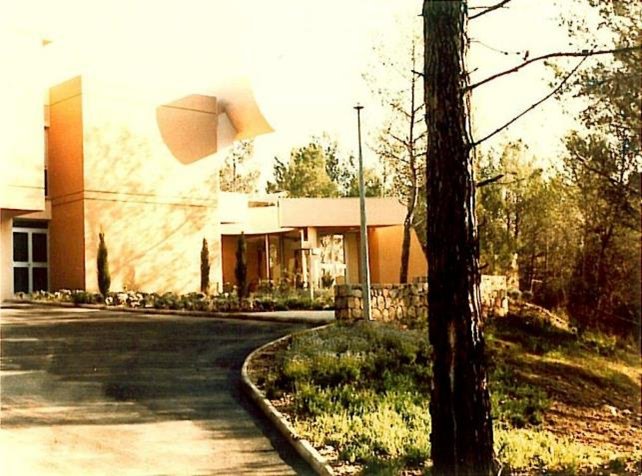It was in the second half of the 1970s, in response to the first oil shock that was adopted the project to promote development teams and laboratories to work on the use of solar energy. For this purpose, the political context is otherwise favorable to the deconcentration of Parisian public research towards the province, the CNRS, with the help of the region, chose to implant new resources on the site of the Sophia-Antipolis International Business Park.
However, the oil crisis has gone away, the solar ceases to be a priority in the 90s. In addition, tandem cells based GaAs do not meet terrestrial needs because they are too expensive, and the space market remains quite limited. The CNRS is therefore reorienting its activity in the mid-90s and the lab is embarking on the exploration of new semiconductor materials, so-called wide forbidden band. While GaAs at a corresponding band of 1.4 eV matching near infrared and well suited to solar and telecommunications, other materials like GaN, ZnSe and SiC have forbidden bands 3-3.5 eV, well suited for near-UV and visible emission, and for high power transistors. The laboratory benefits to change its name in 1992 and becomes the CRHEA, Research Center on HeteroEpitaxis and its Applications. Behind this change of thematic, the laboratory retains its basic expertise, which is epitaxy, that is to say the crystalline growth of thin layers on a substrate, most often of different nature of the layers, hence the name Heteroepitaxy.
This new theme proves to be a success, particularly the materials nitrides of elements III, ie GaN, AlN, InN and alloys AlGaInN. Indeed, it is these materials that constitute the diodes electroluminescent blue, green and white which led to the lighting revolution that we all know today, with lamps that are almost 10 times more efficient than the old ones incandescent bulbs. But these materials have also made their way in the field of ultraviolet detectors and start to break through in the field of power electronics, next revolution Energy. In 2001, CRHEA created Lumilog, which has since been bought by Saint-Gobain, to manufacture and market GaN substrates. The growth of SiC has, in part, become an activity transferred to NOVASIC installed at CRHEA. The semiconductors II-VI were soon abandoned in the face of success nitrides all over the world, and CRHEA followed that same path in the early 2000s and replaced their study with the one of the materials ZnO and ZnMgO oxides. These materials, whose physical properties are close to those of nitrides, have some specificities currently explored in the area of the show TeraHetrz. Current projects of CRHEA show some evolution towards topics like meta-surfaces (Structuring at a wavelength scale of surfaces for optical purposes), biophysics (with a start-up KLEARIA installed at CRHEA to develop micro-fluidics for, among others, the analysis water, with a nano-son activity for biology) or a "liquid crystals" activity hosted at CRHEA. These new apps of semiconductors demand new developments at epitaxy and justifies CRHEA's place at the national level. It is in this context that the CRHEA coordinates the national grouping labex "GaNeX" and occupies a central place in France in the field of the epitaxy of nitrides. Beyond changes in themes, names or directors of the laboratory, CRHEA retains its essential identity which is the expertise in epitaxy.



